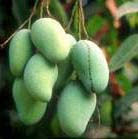 |
| a home away from home |
| HOME FEEDBACK TELL A FRIEND WEB SITE DESIGN CAREER WITH US CONTACT US |
![]() Festivals
Festivals
![]() Durga Puja
Durga Puja
![]() Associations
Associations
![]() Learn
Bangla
Learn
Bangla
![]() Beng.
Marriage
Beng.
Marriage
![]() Art &
Craft
Art &
Craft
![]() Great Indians
Great Indians
![]() Beauty
Care
Beauty
Care
![]() Recipe
Recipe
![]() Astrology
Astrology
![]() Beng.
Section
Beng.
Section
![]() Bengal
Bengal
![]() Calcutta
Calcutta
![]() Beng.
Calendar
Beng.
Calendar
![]() Wallpapers
Wallpapers
![]() Movie
Movie
![]() Music
Music
![]() E-Card
E-Card
![]() Shopping
Shopping
![]() E-Puja Room
E-Puja Room
![]() News
News
![]() E-mail
E-mail
![]() Month's Events
Month's Events
![]() Weather
Weather
![]() Chat
Chat
![]() Travel
Travel
![]() Join Us
Join Us
![]() Advertise
Advertise
![]() Website links
Website links
![]() Link to us
Link to us
![]() Guest Corner
Guest Corner
![]() Services
Services
![]() WebSite
Design
WebSite
Design

Mango is not only the national fruit of India this tropical fruit is the part and parcel of Indian heritage. It spread its roots from our heritage books, the Puranas to Epics and found its patrons throughout the ancient, medieval and modern history from ancient poetry to modern prose to children literature.
Its scientific name is Mangifera India. Originally a wild variety of this juicy fruit was found in Mizoram, Arunachal Pradesh and N.E India. In course of time it spread to different parts of the country.The Sanskrit term of mango 'Amra' is first found written in Upanishads in 2000 B.C. the great Indian scholar Panini used the term as a substitute of Ancient Indian city or 'Nagari'. The ruler was termed by him as 'Amrapala'. In Mahabharata reference of mango was found several times, first as the origin of Jayadratha, son of Brihadratha and second as the reveler of Draupadi's secret of her weakness towards Krishna besides that of her five husbands, the Pandavas.
The tree has been personified as male and the flower and fruit as female in Puranas and great ancient poetical works of Kalidasa like 'Avigyana Sakuntalam'. In the medieval writings of Bharat Chandra like 'Bidyasunar', its juice has been described preferred by Indra, King of Hindu deities, to Somarasa (his favourite intoxicating drink). From writings of Rabindranath Tagore to that of present day popular writings mango retains its literal importance.
The tree has been personified as male and the flower and fruit as female in Puranas and great ancient poetical works of Kalidasa like 'Avigyana Sakuntalam'. In the medieval writings of Bharat Chandra like 'Bidyasunar', its juice has been described preferred by Indra, King of Hindu deities, to Somarasa (his favourite intoxicating drink). From writings of Rabindranath Tagore to that of present day popular writings mango retains its literal

importance.The royal monopoly of the fruits grafting was removed by the fifth Great Mughal , Shahjahan. It was during his time that foreign traveler Manuchhi visited India and made a lavish praise for the Alfanso (a variety of the fruit) of Goa. Mughals were great patrons of the fruit. During the time of Great Mughal Akbar, an orchard of 1 lakh mango was planted near Darbhanga. Jahangir's writings informed us of supplies from Malwa, Gujrat, Deccan and Burhanpur. With that he did not fail to mention that his favourites are only those from Agra.
Traditionally mangoes were ripening by keeping them in bed of leaves, changing side from time to time. The fruits were then wrapped in cotton. To slice the fruit silver knife was the primary choice, then bamboo knives were preferred.Having a wide range of varieties mangoes have different names, tastes, looks and even time of eating. Alfanso, a sweet-sour variety, having a pinkish yellow look, grown in different parts of India, and changing flavours, tastes best during April. 'Langra' grown in Kashi (Benaras) is at its peak during June. Eaten before time it tastes sour and after pungent. Some royal varieties like Konitoor, Ranipasand, Bibipasand even have specific time in the day to taste their best. Some of these varieties tastes best when taken with milk.
According to its varieties of flavours Indian people follow their regional preferences. Alfanso of Balasore are hot favourites among the Gujratis while Marwaris prefer the variety from Ratnagiri.Bengalies have a fascination for Himsagar while that of Utter pradesh lies with Langra of Kashi. The south Indians on the other hand, generally go for the Nilam variety.
Still as have
been said-
'What's in a name? That which we call a mango
By any other name would taste as sweet'.
Oops! was it about something else.
GREAT INDIANS || BENGALI SECTION || BENGALI MARRIAGE || BABY'S NAME || WALLPAPER || BENGAL || WEATHER || TRAVEL
MOBILE WALLPAPER || E-CARD || MOVIE || WEBSITE LINKS || ASSOCIATIONS || SHOPPING || ASTROLOGY || MUSIC || BEAUTY CARE
TIGER || NEWS || GUEST CORNER || FEEDBACK || LINK TO US || FOR ADVERTISING || SERVICES || CONTACT || BENGALI CALENDAR
Graphics, Sound or content copied or produced in part or whole in any media will be illegal.
Persons or websites caught using our material will be penalized.
Privacy Statement || Copyright
Copyright ©1999-2014 BANGALINET.COM